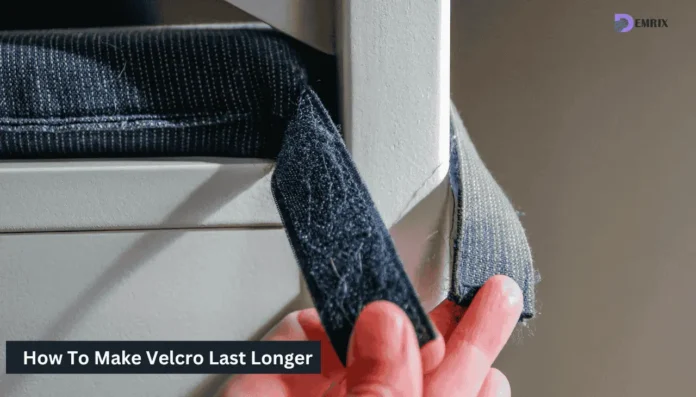Velcro is a widely used fastening system in everything from clothing and shoes to bags and accessories. While its simplicity and convenience make it indispensable, frequent use can cause wear and tear, decreasing effectiveness. The good news is that you can make your Velcro last much longer with proper care and a few maintenance tips. This guide will walk you through the causes of Velcro wear, cleaning methods, storage tips, and ways to restore its grip, ensuring your Velcro stays in excellent condition for years to come.
Understanding How Velcro Works
Velcro consists of two parts: the hook side and the loop side. The hooks latch onto the loops to create a secure connection. The hooks on hooks and loops on loops can break or bend over time, reducing their grip. It is important to understand how this happens so Velcro can be properly maintained.
Common Causes of Velcro Wear and Tear
Several factors contribute to Velcro losing its stickiness:
- Dirt and debris: Small particles can clog the hooks and loops.
- Overuse: Frequent fastening and unfastening can weaken the hooks and loops.
- Improper alignment: Misaligned hooks and loops fail to connect securely, causing wear.
- Heat and humidity: High temperatures or damp conditions can deform or damage Velcro.
Tips for Proper Velcro Use
- Align Hooks and Loops Correctly
- Always ensure the hook and loop sides are correctly aligned when fastening. Misalignment can strain the material and reduce its effectiveness.
- Avoid Overloading
- Don’t use Velcro to secure items beyond its weight capacity. Overloading can stretch or damage the hooks and loops.
- Unfasten Gently
- Rip Velcro apart gently instead of pulling it forcefully. This prevents the hooks from bending or breaking.
Cleaning Your Velcro for Optimal Performance
Cleaning Velcro is crucial for maintaining its grip. Here’s how:
- Remove Dirt and Debris
- Use a soft brush, lint roller, or fine-toothed comb to remove trapped dirt and lint. A pair of tweezers can help with stubborn debris.
- Wash Gently
- If Velcro is attached to washable items, clean it by hand or in a washing machine using a garment bag. Permanently close the Velcro before washing to prevent snagging.
- Dry Properly
- Allow the Velcro to air dry. You should avoid using high heat, since it can damage the material.
Storing Velcro Items the Right Way
Proper storage is essential for maintaining Velcro’s effectiveness. Follow these tips to ensure your Velcro stays in good condition:
- Proper Storage
- Store Velcro in a cool, dry place, away from direct sunlight. Material can be damaged by excessive heat or moisture.
- Avoid Folding
- Repeatedly folding Velcro can damage the fibers. Keep its structure by rolling it gently.
- Separate Hook and Loop Sides
- Keep the hook and loop sides apart when storing Velcro for extended periods to prevent tangling and unnecessary wear.
Quick DIY Fixes for Damaged Velcro
If your Velcro isn’t sticking well, try these fixes:
- Restore the Hook and Loop Texture
- Use a comb or brush to lift flattened hooks or loops. This can help restore some grip.
- Reattach or Replace Damaged Velcro
- If the damage is extensive, consider replacing the Velcro strip. Adhesive-backed Velcro can be a quick fix, or sew-on Velcro offers a more permanent solution.
Velcro Maintenance for Specific Items
- Clothing: Fasten Velcro before washing and avoid fabric softeners, as they can leave residues that reduce stickiness.
- Shoes: Clean the Velcro regularly, especially after outdoor activities, to remove mud and dirt.
- Bags and Accessories: Check for debris build-up frequently, as Velcro on bags is prone to collecting lint.
When to Replace Velcro
Despite your best efforts, Velcro may eventually lose its effectiveness beyond repair. If cleaning and minor fixes don’t improve the grip, it’s time to replace the Velcro strip. The replacement of a component is an effective and cost-effective option for restoring functionality.
FAQs: How to Make Velcro Last Longer
- Why does Velcro lose its stickiness over time?
Velcro can lose grip due to dirt and debris clogging the hooks and loops, misalignment during use, or wear and tear from frequent use. Heat, humidity, or improper handling exposure can also reduce its effectiveness.
- How can I clean dirty Velcro?
Use a soft brush, lint roller, or a fine-toothed comb to remove dirt and lint. Tweezers can help with stubborn debris. If the Velcro is on a washable item, close it before washing and air dry it after cleaning.
- Can I repair the Velcro that doesn’t stick anymore?
You can temporarily restore Velcro by brushing the hooks and loops to lift flattened fibers. For a permanent fix, replace the Velcro strip with adhesive-backed or sew-on Velcro.
What should I do if my Velcro keeps catching on other fabrics?
To prevent snagging, permanently fasten the Velcro when not in use. You can also store Velcro items separately from delicate fabrics like silk or knitwear.
Final Thoughts
Velcro is a handy and versatile fastening tool that requires attention to maintain effectiveness over time. Small steps, from aligning the hooks and loops properly to cleaning and storing Velcro items carefully, can extend its lifespan. Following the tips outlined in this guide, you can keep your Velcro performing at its best and avoid unnecessary replacements. Remember, a little effort today can save you time and money tomorrow, ensuring your Velcro serves you well for countless uses.



